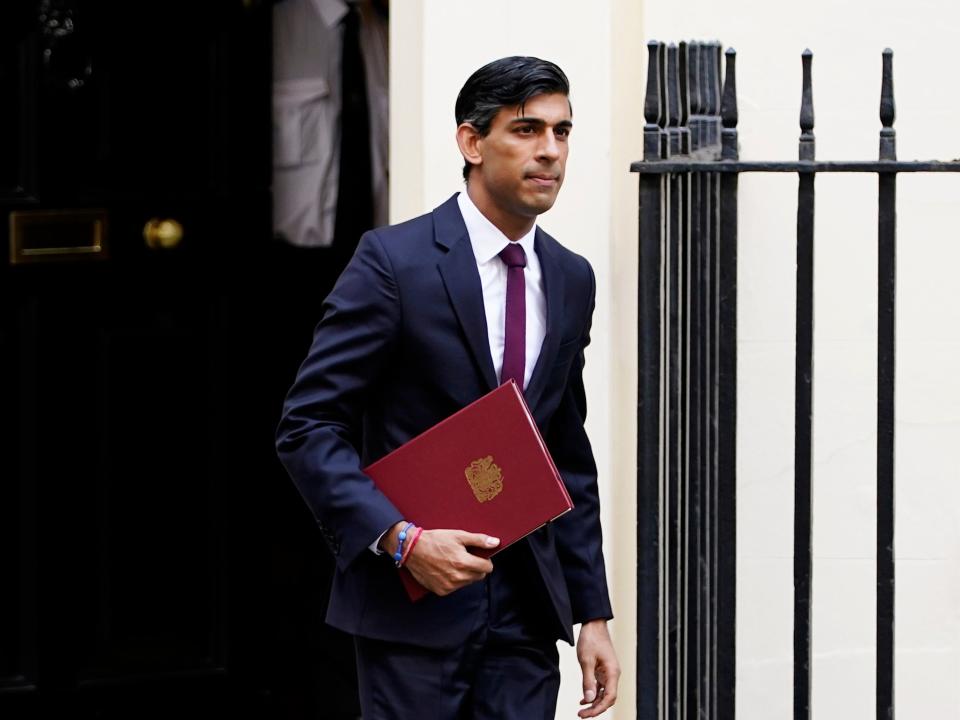Job Support Scheme: What will new scheme announced by Rishi Sunak look like?

Rishi Sunak delivered a statement to the House of Commons on Thursday about the government’s furlough scheme, which is coming to an end in October.
The chancellor told the Commons that “there has been no harder choice then the decision to end the furlough scheme”, stating that the government “provided one of the most generous and comprehensive economic plans anywhere in the world”. While the furlough scheme is still ending in October, Mr Sunak announced that a new scheme is being introduced.
But, he warned: “I cannot save every business, I cannot save every job – no chancellor could – but what we can and must do is deal with the real problems business and employees are facing now,” Mr Sunak stated.
Here is everything you need to know about the new Job Support Scheme unveiled by the government.
Watch: Chancellor unveils winter economic plan: the key points
What is the new Job Support Scheme?
Mr Sunak told the Commons that the new Job Support Scheme being launched by the government this autumn will help businesses keep employees on, rather than making them redundant.
Under the new scheme, the government will top up the wages of people working at least a third of their normal hours.
They will be paid for that work as normal, with the state and employers then increasing those wages to cover two-thirds of the pay lost by working reduced hours.
The level of grant will be calculated based on the employee’s usual salary, capped at £697.92 per month.
The scheme will run for six months, from November 2020 to April 2021.
Am I eligible to receive support?
Anyone who is employed as of Wednesday 23 September is eligible to be covered by the scheme, said Mr Sunak.
All small and medium-sized businesses are eligible to apply, but larger businesses will have to prove their profits have been hit by the pandemic.
Businesses are eligible even if they did not previously use the furlough scheme.
Will it stop people from being made redundant?
Employers who retain furloughed staff on shorter hours can claim both the new Job Support Scheme and the existing Jobs Retention Bonus, which Mr Sunak says will “significantly increase the incentives to bring back previously furloughed employees”.
The Jobs Retention Bonus lets employers claim £1,000 for formerly furloughed staff who remain employed until at least February.
Businesses will also not be able to issue redundancy notices to employees while taking part in the new scheme, and there will be restrictions on larger companies “in terms of capital distributions to shareholders while they are in receipt of money for their workers in this scheme”, Mr Sunak told the Commons.
However, the chancellor has received criticism that the package came “too late”, as Labour’s shadow chancellor Anneliese Dodds pointed out many workers whose redundancy process, ahead of losing their jobs at the end of October, began last week.
How does this differ from the furlough scheme?
The new Job Support Scheme is not as generous as the furlough scheme, capped at £697.92 instead of the previous £2,500 the government was paying out to keep people employed.
However, Mr Sunak told MPs that although his primary goal was to support jobs, this could not include maintaining posts with no viable future under the coronavirus restrictions announced earlier this week – including a 10pm curfew for pubs and restaurants in England.
The scheme has been widely welcomed by business groups, but the British Chambers of Commerce warned the chancellor “must remain open to taking additional action to support parts of the economy facing unprecedented challenges over the months ahead”.
What other types of support are there?
The current self-employed grant will be renewed on similar terms to the new Job Support Scheme.
The grant is worth up to 20 per cent of average monthly profits for the period between November to January, up to a total of £1,875, with further sums available to cover the following three months.
Self-assessment tax payments deferred from July, as well as those due in January, will not need to be paid until January 2022.
Mr Sunak also announced an extension to the temporary reduction of VAT rates from 20 per cent to five per cent for the hospitality and tourism sectors for a further two months, with a new deadline of 31 March 2021.
Businesses on “bounce-back loans” have had a “pay-as-you-grow” element added, which gives loanees 10 years instead of six years to repay it, a move that will slash monthly repayments by almost half, according to the chancellor.
Those struggling to repay their bounce-back loans will be given the option of making interest-only payments and “anyone in real trouble” will be allowed to suspend repayments altogether for up to six months.
Read more
Job Support Scheme: Rishi Sunak announces plan to top up wages of workers on reduced hours
VAT cut for hospitality sector extended for six months, Rishi Sunak announces
Coronavirus: How can Rishi Sunak protect jobs when furlough scheme ends?
Rishi Sunak must decide how to protect jobs now – or risk losing his superstar status
Young people have been hit hard, but the government and employers can both help them into jobs
The jobs crisis is the biggest economic challenge of our future

